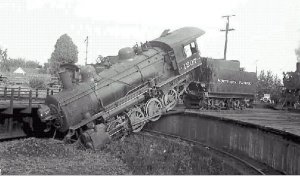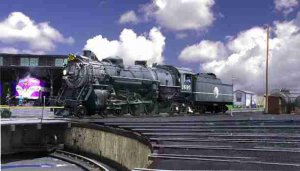Which way to steam engines go in for service?
In most roundhouses, they seem to go in forwards so the tender sticks out. However, I have a plan for a single-bay engine house that calls for the exhaust hood that fits over the loco's stack to be at the front of the building. Does this mean the loco backs in?
A related question - do locos ever get uncoupled from their tenders for service (or any other reason)?
Thanks.
Andrew
In most roundhouses, they seem to go in forwards so the tender sticks out. However, I have a plan for a single-bay engine house that calls for the exhaust hood that fits over the loco's stack to be at the front of the building. Does this mean the loco backs in?
A related question - do locos ever get uncoupled from their tenders for service (or any other reason)?
Thanks.
Andrew



